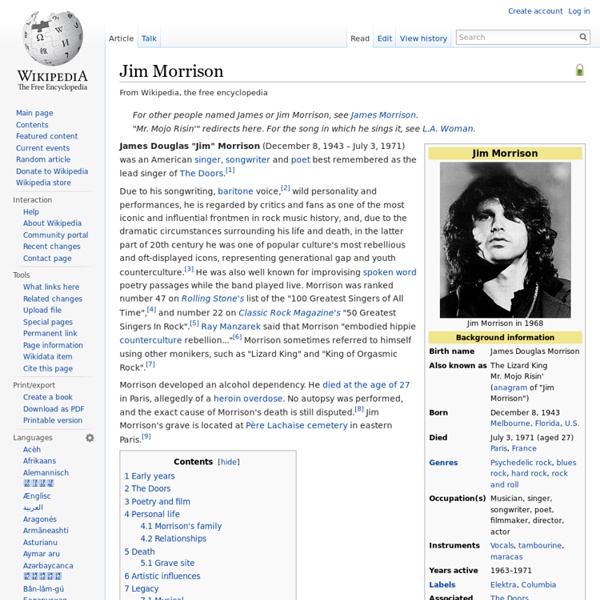The Concert for Bangladesh
The concerts raised close to US$250,000 for Bangladesh relief, which was administered by UNICEF. Although the project was subsequently marred by financial problems – a result of the pioneering nature of the venture – the Concert for Bangladesh is recognised as a highly successful and influential humanitarian aid project, generating both awareness and considerable funds as well as providing valuable lessons and inspiration for projects that followed, notably Live Aid.[3][4][5] By 1985, through revenue raised from the Concert for Bangladesh live album and film, an estimated $12 million had been sent to Bangladesh in relief.[6] Sales of the live album and DVD release of the film continue to benefit the George Harrison Fund for UNICEF. Background[edit] Bhola cyclone track during the second week of November 1970 I was in a very sad mood, having read all this news, and I said, "George, this is the situation, I know it doesn't concern you, I know you can't possibly identify." – Ravi Shankar, 1971
Six Views of a Machine Gun - Matthew T Grant
Inspired by Chuck Klostermann’s inspiring analysis of Led Zeppelin’s last performance at Knebworth. Thanks, Chuck. 1. 2. Now, Hendrix wasn’t particularly political and, if the Ghetto Fighters are to be believed, his interest in the Panthers, or any other “soldiers” fighting in on the streets of America’s cities for that matter, was really more about his search for an identity that was more “black” and less, um “British.” Then, at the end of the “Machine Gun” at the Fillmore, after wringing various sounds of battle from his Strat and bringing the song to a close, Jimi brings us up short with this, “That’s what we don’t want to hear any more of.” 3. 4. 5. 6. I mention it here because reality is my religion and it’s important to me that, rather than mythologizing our idols, we choose to view them in the full flush of their flawed humanity.
KMPX (defunct)
On December 10, 1959, the station, owned by San Francisco businessman Franklin Mieuli, signed on at 106.9 MHz with the KPUP call letters. Under Leon Crosby's ownership, the station began operating in multiplex stereo and the call letters were changed to KMPX (for "MultiPleX") the following month. Soon after, Crosby gained authorization by the FCC to increase the station's power from the original 37,000 watts to 80,000 watts. 1st anniversary of freeform rock at Winterland Arena Though KMPX's daytime schedule was heavy with ethnic programming, the midnight-6 AM slot was mostly open. The task of programming and operating two stations was rather time consuming, and Donahue had to occasionally miss his show on one or the other station. With new competition from the very staff that helped to create KMPX, Crosby continued with the freeform format. In March 1972, KMPX dropped rock and switched to a big band/nostalgia format.
History of the hippie movement
The hippie subculture began its development as a youth movement in the United States during the early 1960s and then developed around the world. Its origins may be traced to European social movements in the 19th and early 20th century such as Bohemians, and the influence of Eastern religion and spirituality. From around 1967, its fundamental ethos — including harmony with nature, communal living, artistic experimentation particularly in music, and the widespread use of recreational drugs — spread around the world. Precursors[edit] Classical culture[edit] 19th- and early 20th-century Europe[edit] The symbol of the Wandervogel ("migratory bird") youth movement In fin de siècle Europe, from 1896–1908, a German youth movement known as Der Wandervogel began to grow as a countercultural reaction to the organized social and cultural clubs that centered on German folk music. Beat Generation[edit] 1960–1966[edit] Ken Kesey and the Merry Pranksters[edit] Red Dog Experience[edit] Anti-war protests[edit]
AllPolitics - Democratic National Convention
(Sources: "Miami and the Siege of Chicago" by Norman Mailer, Facts on File, CQ's Guide to U.S. Elections) The 1968 Democratic Convention, held on August 26-29th, stands as an important event in the nation's political and cultural history. Events Leading up the 1968 Convention Riots The primary cause of the demonstrations and the subsequent riots during the 1968 Chicago convention was opposition to the Vietnam War. Groups related to this effort also planned events. On March 31, President Johnson announced he would not seek re-election. However, by early April there was much talk of Hubert Humphrey, Johnson's Vice President, running for the presidency. Other events preceding the 1968 Democratic convention contributed to the tense national mood. Attempts to Move the Convention from Chicago Many Democrats were eager to move their national convention from Chicago to Miami, where the Republicans were to hold their nominating event. Mayor Richard J. The Convention Sen. Humphrey chose Sen.
Psychedelic music of the 1960s and beyond - acid rock in review
Psychedelic rock
From New World Encyclopedia Echo and the Bunnymen in 2005 A fractal picture. Psychedelic cover art for the album Blue Explosion: A tribute album recorded in 2009 by various groups to honor the American psychedelic blues-rock band Blue Cheer which initially performed and recorded in the late 1960s and early 1970s and was sporadically active until 2009. Based in San Francisco, Blue Cheer played in a psychedelic blues-rock style, and is also credited as being pioneers of heavy metal. Psychedelic rock is a style of rock music inspired by or attempting to replicate the mind-altering experiences brought on by psychoactive drugs such as cannabis, psilocybin, mescaline, salvia divinorum, and especially LSD. In the history of rock music, psychedelic rock is a bridge from early blues-based rock to later progressive rock and heavy metal, but it also drew heavily non-Western sources, such as Indian music. On a cautionary note, this article does not recommend drug use in any way, shape, or form. Albums



